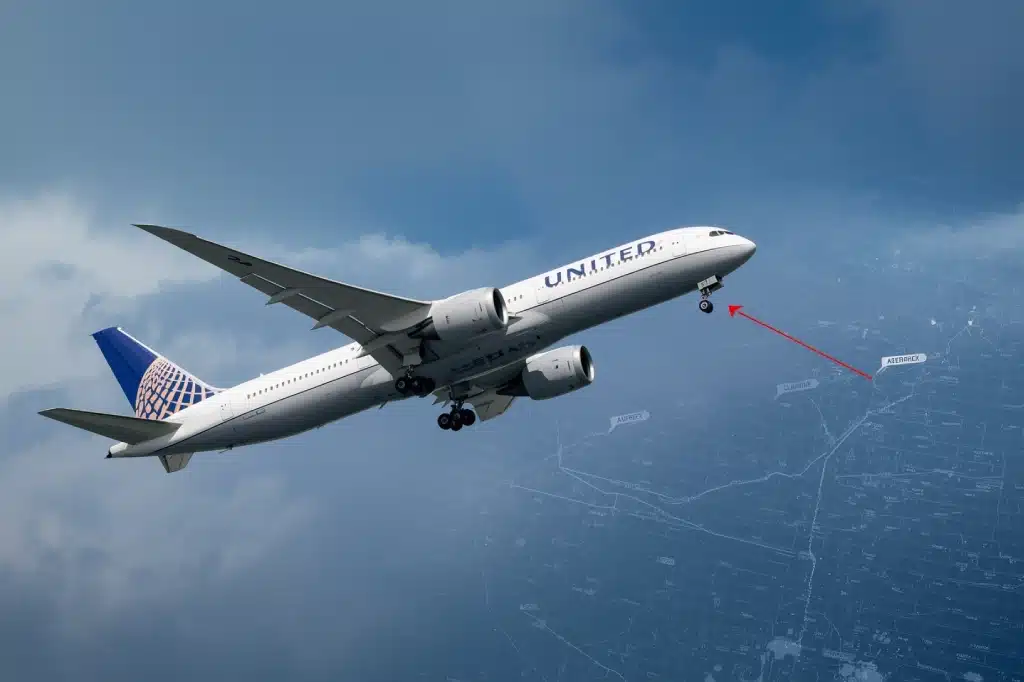United Airlines Flight UA770 made headlines when it declared an emergency mid-flight, prompting a diversion to London Heathrow Airport. The flight, which was traveling from London to Chicago, was forced to turn around due to a critical in-flight issue. In this article, we’ll explore the details behind the United Airlines Flight UA770 emergency diversion, what led to it, the current status of the flight, and what you need to know about in-flight emergencies.
What Caused United Airlines Flight UA770’s Emergency Diversion?
A Pressurization Problem
The United Airlines Flight UA770 emergency diversion was triggered by a cabin pressurization issue. While such issues are rare, they are taken very seriously by flight crews. When cabin pressurization drops below safe levels, passengers can experience discomfort or more severe symptoms, including dizziness and shortness of breath.
Flight UA770 was originally cruising at an altitude of 35,000 feet, but as soon as the pressurization problem was detected, the crew immediately followed safety protocols. The decision to divert the flight was made to ensure the safety and comfort of passengers, as maintaining proper cabin pressure is critical for long-duration flights.
Pilot and Crew Response
The quick actions of the flight crew were crucial in ensuring the safety of all passengers on board. The crew communicated with air traffic control and prepared for a diversion to Heathrow Airport, which was the nearest suitable airport capable of handling the emergency.
Dr. Michael Harrison, an aviation safety expert, emphasized the importance of crew training: “When a situation like this arises, pilots and cabin crews are trained to follow strict procedures. Their swift and calm response is what often separates a smooth emergency from a chaotic one.”
What’s the Current Status of United Airlines Flight UA770?
As of now, the United Airlines Flight UA770 emergency diversion status has been resolved. After a safe landing at London Heathrow, the aircraft was thoroughly inspected by ground crews. Fortunately, no injuries were reported, and the passengers were safely transferred to alternate flights to continue their journeys.
Aircraft Inspection and Passenger Rebooking
After the emergency landing, the aircraft was grounded for inspection. According to United Airlines, the cabin pressurization issue was traced back to a minor mechanical fault that was quickly repaired. The flight was then cleared to resume its operation after a brief delay.
Passengers on the diverted flight were rebooked on alternative flights. United Airlines provided meal vouchers and hotel accommodations where necessary, as part of their emergency response protocol.
Why Do Flights Get Diverted?
Flight diversions like the United Airlines Flight UA770 emergency diversion are rare, but they are a necessary safety measure. There are a variety of reasons why a flight may be diverted, and they are generally classified into the following categories:
- Mechanical Failures: Malfunctions, such as issues with cabin pressurization, engines, or other critical systems, are a common reason for a diversion.
- Medical Emergencies: If a passenger falls ill or experiences a serious medical issue during the flight, a diversion may be necessary to get them medical attention as quickly as possible.
- Weather Conditions: In extreme weather conditions, such as storms or poor visibility, flights may need to be diverted to safer airports.
- Security Threats: If there is a security issue on board or at the destination airport, diversions are made to ensure the safety of passengers and crew.
What Happens After a Diversion?
Once a flight has been diverted, there are a series of steps to follow to ensure that everyone is safe and the aircraft is ready for service again:
- Ground Support: Emergency medical and aviation support teams are dispatched to assist passengers.
- Aircraft Inspection: The diverted aircraft is thoroughly checked to ensure there are no lingering issues. In the case of Flight UA770, the pressurization system was fixed promptly.
- Passenger Rebooking: If necessary, passengers are rebooked on alternate flights to continue their journey.
For passengers, it’s a stressful experience, but the priority is always to make sure that they are safe and can reach their destination as soon as possible.
What Should Passengers Do During an Emergency Diversion?
If you ever find yourself on a diverted flight, here’s what you should do:
- Stay Calm: Panicking won’t help. The flight crew is trained to manage emergencies, and keeping calm will help you understand the situation better.
- Listen to Announcements: Pay close attention to instructions from the crew. They will provide updates and let you know what’s going on.
- Follow Crew Instructions: In some cases, you might be asked to remain seated with your seatbelt fastened. Follow these instructions for your safety.
- Stay Informed: If possible, check with flight attendants about the current status and next steps. They are there to help and provide updates.
Frequently Asked Questions (FAQs)
Why do flights get diverted?
Flights may be diverted due to mechanical failures, medical emergencies, severe weather, or security concerns. Diversions are made to ensure the safety of passengers and crew.
What happens when a flight is diverted?
When a flight is diverted, it will land at an alternate airport, and emergency crews are typically standing by to assist. The aircraft will undergo an inspection, and passengers will either be rebooked on another flight or assisted with necessary accommodations.
How do pilots handle emergency diversions?
Pilots are trained to handle all sorts of in-flight emergencies, including diversions. They will assess the situation, communicate with air traffic control, and make decisions based on safety protocols. The crew will also keep passengers informed throughout the process.
Is it common for flights to be diverted?
No, diversions are relatively rare. According to the FAA, less than 1% of flights are diverted annually due to emergencies. However, diversions are a critical part of aviation safety.
Can I get compensation if my flight is diverted?
In most cases, if your flight is diverted, you may be entitled to compensation, depending on the airline’s policy and the circumstances. United Airlines, for example, may provide meal vouchers, hotel accommodations, or other forms of compensation for the inconvenience.
Conclusion
The emergency diversion of United Airlines Flight UA770 highlights the importance of safety in air travel. While in-flight emergencies are rare, the crew’s swift response ensured that all passengers were safe and that the situation was handled efficiently. The status of United Airlines Flight UA770 has been resolved, and the aircraft is back in service after repairs.
In these situations, it’s important to remember that the safety of passengers is always the top priority. Flight diversions are not only part of standard aviation procedures but also a reminder of how well-prepared crews and airlines are to handle emergencies when they arise.







